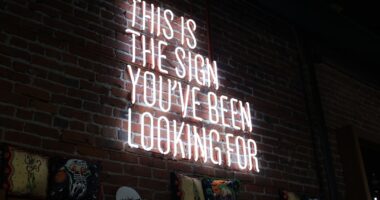NFTs, or non-fungible tokens, are unique digital assets stored on a blockchain, which is a decentralized and distributed digital ledger. Unlike cryptocurrencies, NFTs are not interchangeable and possess specific values and information that make them irreplaceable. This uniqueness and scarcity contribute to their value and desirability.
Digital art encompasses any form of visual art created using digital technology, including digital paintings, illustrations, 3D sculptures, and interactive installations. The emergence of NFTs has provided digital artists with the opportunity to tokenize their work and sell it as unique digital assets. This development has expanded the possibilities for artists, enabling them to reach a global audience and monetize their work in novel ways.
The combination of NFTs and digital art has created a new market, allowing artists to tokenize and sell their digital creations in previously unavailable formats. This intersection of technology and art has opened up new avenues for artistic expression, distribution, and commercialization in the digital realm.
Key Takeaways
- NFTs are unique digital assets that represent ownership of digital or physical items, including digital art.
- When choosing a platform for NFT creation, consider factors such as fees, user interface, and community support.
- Uploading digital art as an NFT involves creating a digital wallet, minting the NFT, and setting a price and royalties.
- Controversies surrounding NFTs and digital art include environmental concerns, copyright issues, and the impact on traditional art markets.
- The world of crypto and NFT jobs offers opportunities in areas such as marketing, development, and community management.
- Bitcoin plays a significant role in the NFT and digital art world as a widely accepted cryptocurrency for buying and selling NFTs.
- Tips for marketing and selling NFT digital art include building a strong online presence, engaging with the community, and leveraging social media and NFT marketplaces.
Choosing the Right Platform for NFT Creation
Popular NFT Platforms
When it comes to creating and selling NFTs, choosing the right platform is crucial. There are several popular platforms that allow artists to mint and sell their NFTs, each with its own set of features and benefits. One of the most popular platforms is OpenSea, which is a decentralized marketplace for NFTs.
Key Features and Benefits
OpenSea allows users to create and sell their NFTs with low gas fees and no platform fees, making it an attractive option for many artists. Another popular platform is Rarible, which allows artists to create and sell custom NFTs with a few simple clicks. Rarible also has its own token, RARI, which can be used for governance and voting within the platform.
Other Notable Platforms
Other popular platforms include Foundation, KnownOrigin, and SuperRare, each with its own unique features and benefits for artists. When choosing a platform for NFT creation, it’s important to consider factors such as gas fees, platform fees, user interface, and community support. Some platforms may be better suited for certain types of digital art or may have a larger audience of collectors.
Choosing the Right Platform for Your Needs
Ultimately, the right platform for NFT creation will depend on the individual needs and preferences of the artist.
Creating and Uploading Your Digital Art as an NFT

Once you’ve chosen a platform for NFT creation, the next step is to create and upload your digital art as an NFT. The process of minting an NFT typically involves creating a digital wallet, connecting it to the chosen platform, and then uploading your digital art files. Most platforms will require you to pay a gas fee in order to mint your NFT, which can vary depending on network congestion and other factors.
When uploading your digital art as an NFT, it’s important to provide as much information as possible about the piece. This can include details such as the title, description, edition number (if applicable), and any additional files or unlockable content that may be included with the NFT. Some platforms also allow artists to set royalty fees for secondary sales, ensuring that they continue to receive a portion of the profits each time the NFT is sold in the future.
After your NFT has been created and uploaded, it will be listed on the chosen platform for collectors to discover and purchase. It’s important to promote your NFT on social media and other channels in order to reach a larger audience of potential buyers. With the right marketing and promotion, your digital art NFT has the potential to reach collectors from around the world.
Understanding the Controversies Surrounding NFTs and Digital Art
While NFTs have brought about many exciting opportunities for digital artists, they have also been met with controversy and criticism. One of the main concerns surrounding NFTs is their environmental impact, particularly in relation to the energy consumption of blockchain networks such as Ethereum. The process of minting and trading NFTs requires a significant amount of computational power, which has led to concerns about carbon emissions and the overall sustainability of NFTs.
Another controversy surrounding NFTs is the issue of copyright and intellectual property rights. Because NFTs are based on blockchain technology, they can be bought, sold, and traded by anyone with access to the internet. This has raised concerns about artists losing control over their work and potential copyright infringement issues.
Additionally, there have been cases of plagiarism and stolen artwork being tokenized and sold as NFTs, further complicating the issue of intellectual property rights in the digital art world. Despite these controversies, many artists and collectors see NFTs as a revolutionary new way to buy, sell, and collect digital art. As the technology continues to evolve, it’s likely that these issues will be addressed through new solutions and best practices that prioritize sustainability and ethical practices within the NFT space.
Navigating the World of Crypto Jobs and NFT Jobs
The rise of NFTs has also created new opportunities for individuals looking to work in the crypto and digital art space. There are now a wide range of crypto jobs and NFT jobs available, from technical roles such as blockchain developers and smart contract engineers to creative roles such as digital artists and NFT marketers. Many companies within the crypto and NFT space are actively hiring for these positions, making it an exciting time for individuals looking to break into these emerging industries.
For those with technical skills, there are many opportunities to work on blockchain projects related to NFTs, such as developing new platforms or improving existing ones. Additionally, there is a growing demand for individuals with expertise in cryptocurrency trading, decentralized finance (DeFi), and other areas related to blockchain technology. On the creative side, there are opportunities for digital artists to create and sell their own NFTs, as well as roles in marketing, community management, and content creation for NFT platforms.
Navigating the world of crypto jobs and NFT jobs can be daunting, but there are many resources available for individuals looking to break into these industries. Online job boards, networking events, and industry-specific websites can all be valuable tools for finding job opportunities in the crypto and NFT space. With the right skills and determination, it’s possible to build a successful career in these exciting and rapidly growing industries.
The Role of Bitcoin (BTC) in the NFT and Digital Art World

Bitcoin-Enabled Art: A New Frontier
One such initiative is the concept of “Bitcoin-enabled art,” which involves embedding Bitcoin transactions within digital art pieces. This innovative approach allows collectors to not only purchase a unique digital artwork but also receive a small amount of Bitcoin as part of the transaction. By bridging the worlds of cryptocurrency and digital art, Bitcoin-enabled art has created new opportunities for artists to monetize their work while introducing more people to the world of Bitcoin.
Tokenizing Physical Art with Bitcoin’s Lightning Network
Furthermore, platforms have emerged that enable users to tokenize physical art using Bitcoin’s Lightning Network. This expansion has opened up new possibilities for integrating Bitcoin with the world of digital art. As Bitcoin continues to gain mainstream adoption and recognition as a store of value, its role in supporting digital art through NFTs is likely to grow even further in the coming years.
A Bright Future for Bitcoin and Digital Art
As the relationship between Bitcoin and digital art continues to evolve, it is likely that we will see even more innovative applications of this technology. With its growing mainstream recognition and adoption, Bitcoin is poised to play an increasingly significant role in the world of digital art and NFTs.
Tips for Marketing and Selling Your NFT Digital Art
Once you’ve created and uploaded your digital art as an NFT, it’s important to focus on marketing and selling your work in order to reach potential collectors. One effective strategy for marketing your NFT digital art is to leverage social media platforms such as Twitter, Instagram, and TikTok. By sharing behind-the-scenes content, previews of upcoming releases, and engaging with your audience, you can build excitement around your work and attract more potential buyers.
Another important aspect of marketing your NFT digital art is building relationships within the crypto and digital art communities. Engaging with other artists, collectors, and industry influencers can help you gain visibility and credibility within these communities. Participating in online forums, attending virtual events, and collaborating with other artists can all help you expand your network and reach new audiences.
When it comes to selling your NFT digital art, pricing is an important consideration. It’s important to research similar pieces within your niche or style in order to determine a fair market value for your work. Additionally, offering limited edition releases or exclusive perks for collectors can help create a sense of urgency and exclusivity around your NFTs.
In conclusion, marketing and selling your NFT digital art requires a combination of social media engagement, community building, and strategic pricing. By leveraging these tips and staying proactive in promoting your work, you can increase your chances of success in the competitive world of NFTs.
FAQs
What is NFT digital art?
NFT digital art refers to digital artwork that is tokenized using blockchain technology, creating a unique, non-fungible token (NFT) that represents ownership and authenticity of the artwork.
How do you create NFT digital art?
To create NFT digital art, artists need to first create their digital artwork using digital tools such as graphic design software or digital drawing tablets. Once the artwork is created, artists can then mint it as an NFT on a blockchain platform, such as Ethereum, using a digital wallet and a marketplace for NFTs.
What are the controversial steps to digital stardom in NFT art?
The controversial steps to digital stardom in NFT art include the environmental impact of blockchain technology, the potential for copyright infringement and plagiarism, and the elitism and exclusivity within the NFT art community.
What are the environmental concerns related to NFT digital art?
The process of minting NFTs and trading them on blockchain platforms consumes a significant amount of energy, leading to concerns about the environmental impact of NFT digital art. Critics argue that the energy consumption of blockchain technology is unsustainable and contributes to carbon emissions.
What are the copyright and plagiarism issues in NFT digital art?
NFT digital art raises concerns about copyright infringement and plagiarism, as the ownership and authenticity of digital artwork can be difficult to verify. There have been cases of artists having their work stolen and minted as NFTs without their consent, leading to legal and ethical controversies.
How does the NFT art community address elitism and exclusivity?
The NFT art community has faced criticism for its elitism and exclusivity, as high-profile artists and collectors dominate the market, making it difficult for emerging artists to gain recognition and success. There are ongoing discussions about democratizing the NFT art space and making it more accessible to a wider range of artists and collectors.





